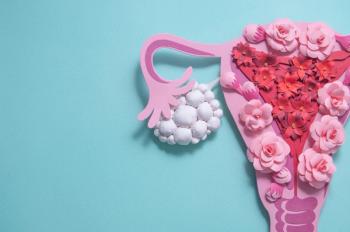
Acupuncture Best for Back and Pelvic Pain in Pregnancy
Evidence shows that acupuncture seems to be the most effective intervention for preventing and treating pregnancy-related pelvic and back pain.
Moderate-quality evidence suggests that acupuncture may be the best intervention for preventing and treating pelvic and back pain in pregnancy, according to the results of an intervention review conducted by the Cochrane Pregnancy and Childbirth Group.1
During pregnancy, most women experience low back pain and nearly 20% of women experience pelvic pain. The pain generally worsens as the pregnancy advances and may interfere with work, activities of daily living, and sleep. There are many available interventions for alleviating low back or pelvic pain in pregnancy, such as exercise, acupuncture, pelvic support belts, osteopathic manipulation, and sleep pillows. However, whether these interventions are effective is unknown.
To better understand which interventions offer the most relief to pregnant women experiencing back and pelvic pain, the review authors evaluated 26 randomized controlled trials that included 4093 participants. Low back pain was evaluated in 11 trials involving 1312 women, pelvic pain was evaluated in 4 trials involving 661 women, and lumbo-pelvic pain was evaluated in 11 trials involving 2120 women.
For low back pain, exercise significantly reduced pain and disability, but the quality of evidence was low. Pelvic support belts, osteopathic manipulation, and sham ultrasound had no effect on back pain. There was limited evidence of very low quality that use of a specially designed pregnancy pillow, compared with a regular pillow, may slightly relieve night pain.
For pelvic pain, acupuncture was more effective than exercise, although both acupuncture and exercise were more effective than usual care (moderate quality evidence). Use of a rigid support belt while exercising seemed to reduce overall pain but had no effect on overall function (low quality evidence). Acupuncture was associated with a significant improvement in evening pain compared with sham acupuncture, and evening pain was relieved equally well with deep or shallow acupuncture.
For lumbo-pelvic pain, an 8-week to 20-week exercise program reduced the risk of lumbo-pelvic pain. However, a 16-week to 20-week exercise program was no better than usual care in terms of the prevention of pelvic pain. Patients who exercised also were significantly less likely to take sick leave and more likely to report improved function (low quality evidence). Osteopathic manipulation and a multimodal intervention that included manual therapy, exercise, and manipulation also seemed to offer some benefit. Acupuncture was more effective than usual care or physiotherapy, and beginning acupuncture at 26 weeks’ gestation provided more benefit than acupuncture started at 20 weeks’ gestation.
Pertinent Points:
- Acupuncture or exercise tailored to the stage of pregnancy significantly reduced evening pelvic pain or lumbo-pelvic pain more than usual care alone.
- Acupuncture was significantly more effective than exercise for reducing evening pelvic pain.
- A 16-week to 20-week training program was no more successful than usual prenatal care for the prevention of low back pain or pelvic pain.
References:
1. Pennick V, Liddle SD. Interventions for preventing and treating pelvic and back pain in pregnancy. Cochrane Database Syst Rev. 2013;8:CD001139. DOI: 10.1002/14651858.CD001139/pub3.
Newsletter
Get the latest clinical updates, case studies, and expert commentary in obstetric and gynecologic care. Sign up now to stay informed.
















